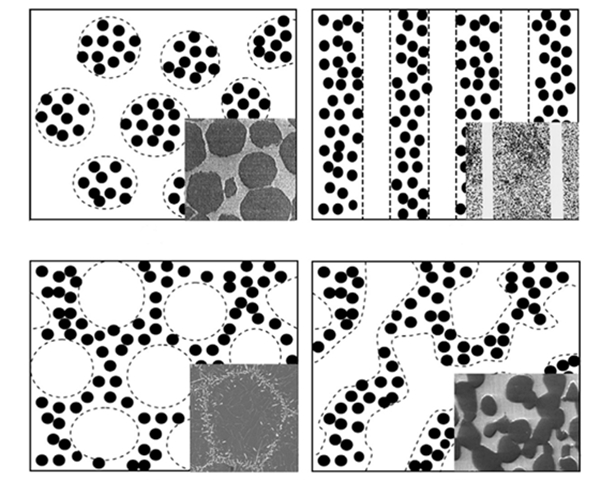MicrostructurallyInhomogeneous Composites: Is a homogeneous reinforcement distribution optimal?
Progress inMaterials Science. Volume 71, June 2015, Pages 93-168
https://doi.org/10.1016/j.pmatsci.2015.01.002
Prof. Peng Huaxin,distinguished expert of the national long-term thousand talents of the Schoolof Materials Science and Engineering, as a correspondence author, his review paper Microstructurally Inhomogeneous Composites: Is a homogeneous reinforcementdistribution optimal? has been published online in the internationallyrenowned journal Progress in Materials Science in February 2015.
Progress inMaterials Science is an authoritative review ofacademic journals in the field of international material science research. Ithas an important influence in the material industry. It is published 6-8 issuesa year, with 1-3 articles per issue. The impact factor in 2014 was 25.87. Thispaper is the third large-scale review paper published by Prof. Peng Huaxin as acorrespondence author in the journal since 2008.
Prof. Peng Huaxinwas selected in the tenth batch of national long-term thousand talents in 2014.In June 2014, he resigned as a professor at the University of Bristol, UK, andjoined the School of Materials Science and Engineering Zhejiang University.Main research directions: aerospace fiber reinforced resin matrix composites;multifunctional composite materials; metal-ceramic composites; nanocompositesand coatings; microstructure design at nano, micro and mesoscale.
For the two-phase(reinforced phase and matrix phase) composites, under the guidance oftraditional composite theory, for half a century, people have been pursuing theuniform distribution of the reinforcing phase in the matrix. On the basis ofdeveloping new composite materials theory, Prof. Peng Huaxin proposed a newconcept that can improve the comprehensive performance of composite materialsmore effectively by regulating the phase distribution state, breaking thetraditional concept of uniform distribution of enhanced phases, and thenachieving a variety of composite structures with better reinforcement andtoughening effects.These new composite structures are suitable for compositesand multifunctional composites on the nano, micro, and mesoscale scales.Associate Professor Huang Lujun and Prof. Geng Lin from Harbin Institute ofTechnology, co-author of the paper, designed and developed aluminum-based,titanium-based and TiAl-based composites with superior performance inagglomerated, networked and layered distribution.This review reviews theresearch results in this field for many years, and looks forward to thedevelopment direction of the enhanced phase controllable non-uniformdistribution composites. The full text is of 76 pages, cited 276 references.

Fig. 1. Schematicillustrations and representative SEM images (insets) of microstructural inhomogeneitywith four different patterns of reinforcement-rich phase. (a) Pattern A:isolated, (b) Pattern B: bar/laminated/ring-like, (c) Pattern C: 3D network withisolated particle-lean phase and (d) Pattern D: 3D network with interconnectedparticle-lean phase forming the so-called bi-continuous microstructure.(Pattern A is similar to that used by Corbin & Wilkinson [30] and Tseng[31]. The four insets are the corresponding real microstructures of compositesselected from published work that will be introduced in the following sections.)


